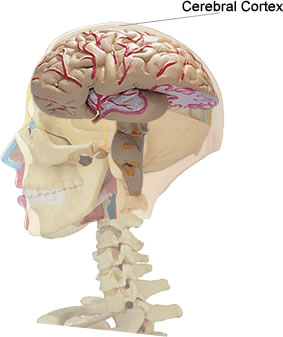Within the realm of communication studies, organizational communication is a field of study surrounding all areas of communication and information flow that contribute to the functioning of an organization. Organizational communication is constantly evolving and as a result, the scope of organizations included in this field of research have also shifted over time. Now both traditionally profitable companies, as well as NGO's and non-profit organizations, are points of interest for scholars focused on the field of organizational communication. Organizations are formed and sustained through continuous communication between members of the organization and both internal and external sub-groups who possess shared objectives for the organization. The flow of communication encompasses internal and external stakeholders and can be formal or informal.

Listening is the act of paying attention to sounds. It includes listening to the sounds of nature, listening to music, and perhaps most importantly, interpersonal listening, i.e. listening to other human beings. When listening to another person, one hears what they are saying and tries to understand what it means.
Symbolic communication is the exchange of messages that change a priori expectation of events. Examples of this are modern communication technology and the exchange of information amongst animals. By referring to objects and ideas not present at the time of communication, a world of possibility is opened. In humans, this process has been compounded to result in the current state of modernity. A symbol is anything one says or does to describe something, and that something can have an array of many meanings. Once the symbols are learned by a particular group, that symbol stays intact with the object. Symbolic communication includes gestures, body language and facial expressions, as well as vocal moans that can indicate what an individual wants without having to speak. Research argues that about 55% of all communication stems from nonverbal language. Symbolic communication ranges from sign language to braille to tactile communication skills.
Communications management is the systematic planning, implementing, monitoring, and revision of all the channels of communication within an organization and between organizations. It also includes the organization and dissemination of new communication directives connected with an organization, network, or communications technology. Aspects of communications management include developing corporate communication strategies, designing internal and external communications directives, and managing the flow of information, including online communication. It is a process that helps an organization to be systematic as one within the bounds of communication.
A skill is the learned ability to act with determined results with good execution often within a given amount of time, energy, or both. Skills can often be divided into domain-general and domain-specific skills. Some examples of general skills are time management, teamwork and leadership, and self-motivation. In contrast, domain-specific skills would be used only for a certain job, e.g. operating a sand blaster. Skill usually requires certain environmental stimuli and situations to assess the level of skill being shown and used.

Nonverbal communication is the transmission of messages or signals through a nonverbal platform such as eye contact (oculesics), body language (kinesics), social distance (proxemics), touch (haptics), voice (paralanguage), physical environments/appearance, and use of objects. When communicating, we utilize nonverbal channels as means to convey different messages or signals, whereas others can interpret these message. The study of nonverbal communication started in 1872 with the publication of The Expression of the Emotions in Man and Animals by Charles Darwin. Darwin began to study nonverbal communication as he noticed the interactions between animals such as lions, tigers, dogs etc. and realized they also communicated by gestures and expressions. For the first time, nonverbal communication was studied and its relevance questioned. Today, scholars argue that nonverbal communication can convey more meaning than verbal communication.

Nonviolent Communication (NVC) is an approach to enhanced communication, understanding, and connection based on the principles of nonviolence and humanistic psychology. It is not an attempt to end disagreements, but rather a way that aims to increase empathy and understanding to improve the overall quality of life. It seeks empathic dialogue and understanding among all parties. Nonviolent Communication evolved from concepts used in person-centered therapy, and was developed by clinical psychologist Marshall Rosenberg beginning in the 1960s and 1970s. There are a large number of workshops and clinical materials about NVC, including Rosenberg's book Nonviolent Communication: A Language of Life. Marshall Rosenberg also taught NVC in a number of video lectures available online; the workshop recorded in San Francisco is the most well-known.
Intercultural communication is a discipline that studies communication across different cultures and social groups, or how culture affects communication. It describes the wide range of communication processes and problems that naturally appear within an organization or social context made up of individuals from different religious, social, ethnic, and educational backgrounds. In this sense, it seeks to understand how people from different countries and cultures act, communicate, and perceive the world around them. Intercultural communication focuses on the recognition and respect of those with cultural differences. The goal is mutual adaptation between two or more distinct cultures which leads to biculturalism/multiculturalism rather than complete assimilation. It promotes the development of cultural sensitivity and allows for empathic understanding across different cultures.

Active listening is the practice of preparing to listen, observing what verbal and non-verbal messages are being sent, and then providing appropriate feedback for the sake of showing attentiveness to the message being presented.
Conflict management is the process of limiting the negative aspects of conflict while increasing the positive aspects of conflict in the workplace. The aim of conflict management is to enhance learning and group outcomes, including effectiveness or performance in an organizational setting. Properly managed conflict can improve group outcomes.

Thomas Gordon was an American clinical psychologist and colleague of Carl Rogers. He is widely recognized as a pioneer in teaching communication skills and conflict resolution methods to parents, teachers, leaders, women, youth and salespeople. The model he developed came to be known as the Gordon Model or the Gordon Method, a complete and integrated system for building and maintaining effective relationships.
The Functional Skills Qualification is a frequently required component of post-16 education in England. The aim of Functional Skills is to encourage learners to develop and demonstrate their skills as well as learn how to select and apply skills in ways that are appropriate to their particular context in English, mathematics, ICT and digital skills. They provide a foundation for progression into employment or further technical education and develop skills for everyday life. Functional Skills are generally available in sixth form colleges, further education colleges, and tertiary colleges.

Analytical skill is the ability to deconstruct information into smaller categories in order to draw conclusions. Analytical skill consists of categories that include logical reasoning, critical thinking, communication, research, data analysis and creativity. Analytical skill is taught in contemporary education with the intention of fostering the appropriate practises for future professions. The professions that adopt analytical skill include educational institutions, public institutions, community organisations and industry.
Health communication is the study and practice of communicating promotional health information, such as in public health campaigns, health education, and between doctor and patient. The purpose of disseminating health information is to influence personal health choices by improving health literacy. Health communication is a unique niche in healthcare that allows professionals to use communication strategies to inform and influence decisions and actions of the public to improve health.
W. Charles Redding is credited as being the "father" of organizational communication. Redding played a significant role in both the creation and study of the field of Organizational Communication. Redding described communication as "referring to the behaviors of human beings, or the artifacts created by human beings, which result in messages being received by one or more persons."

Interpersonal communication is an exchange of information between two or more people. It is also an area of research that seeks to understand how humans use verbal and nonverbal cues to accomplish several personal and relational goals. Communication includes utilizing communication skills within one's surroundings, including physical and psychological spaces. It is essential to see the visual/nonverbal and verbal cues regarding the physical spaces. In the psychological spaces, self-awareness and awareness of the emotions, cultures, and things that are not seen are also significant when communicating.
Body-to-body communication is a way of communicating with others through the use of nonverbal communication, without using speech or verbalization. It can include body language, facial expressions, and other bodily gestures in order to communicate with others without the need of verbal communication. Body-to-body communication accounts for postures, body language, physical touch, nonverbal language, and other bodily gestures.
Workplace communication is the process of exchanging information and wisdom, both verbal and non-verbal between one person/group and another person/group within an organization. It includes e-mails, text messages, notes, calls, etc. Effective communication is critical in getting the job done, as well as building a sense of trust and increasing the productivity of employees. These may have different cultures and backgrounds, and can be used to different norms. To unite activities of all employees and restrain from any missed deadline or activity that could affect the company negatively, communication is crucial. Effective workplace communication ensures that all the organizational objectives are achieved. Workplace communication is tremendously important to organizations because it increases productivity and efficiency. Ineffective workplace communication leads to communication gaps between employees, which causes confusion, wastes time, and reduces productivity. Misunderstandings that cause friction between people can be avoided by effective workplace communication. Effective communication, also called open communication, prevents barriers from forming among individuals within companies that might impede progress in striving to reach a common goal. For businesses to function as desired, managers and lower-level employees must be able to interact clearly and effectively with each other through verbal communication and non-verbal communication to achieve specific business goals. Effective communication with clients plays a vital role in development of an organization and success of any business. When communicating, nonverbal communication must also be taken into consideration. How a person delivers a message has a lot of influence on the meaning of this one.

Pseudo-listening is a type of non-listening that consists of appearing attentive in conversation while actually ignoring or only partially listening to the other speaker. Pseudolistening is often used as a coping mechanism to manage personal needs while appearing attentive to others. The word pseudo-listening is a compound word composed of the prefix pseudo-, and listening. An example of pseudo-listening is trying to multitask by talking on the phone while watching television or completing work. Pseudo-listening is the most ineffective way to communicate because after the conversation one will not have retained much of the information that was said.
The Calgary–Cambridge model is a method for structuring medical interviews. It focuses on giving a clear structure of initiating a session, gathering information, physical examination, explaining results and planning, and closing a session. It is popular in medical education in many countries.







